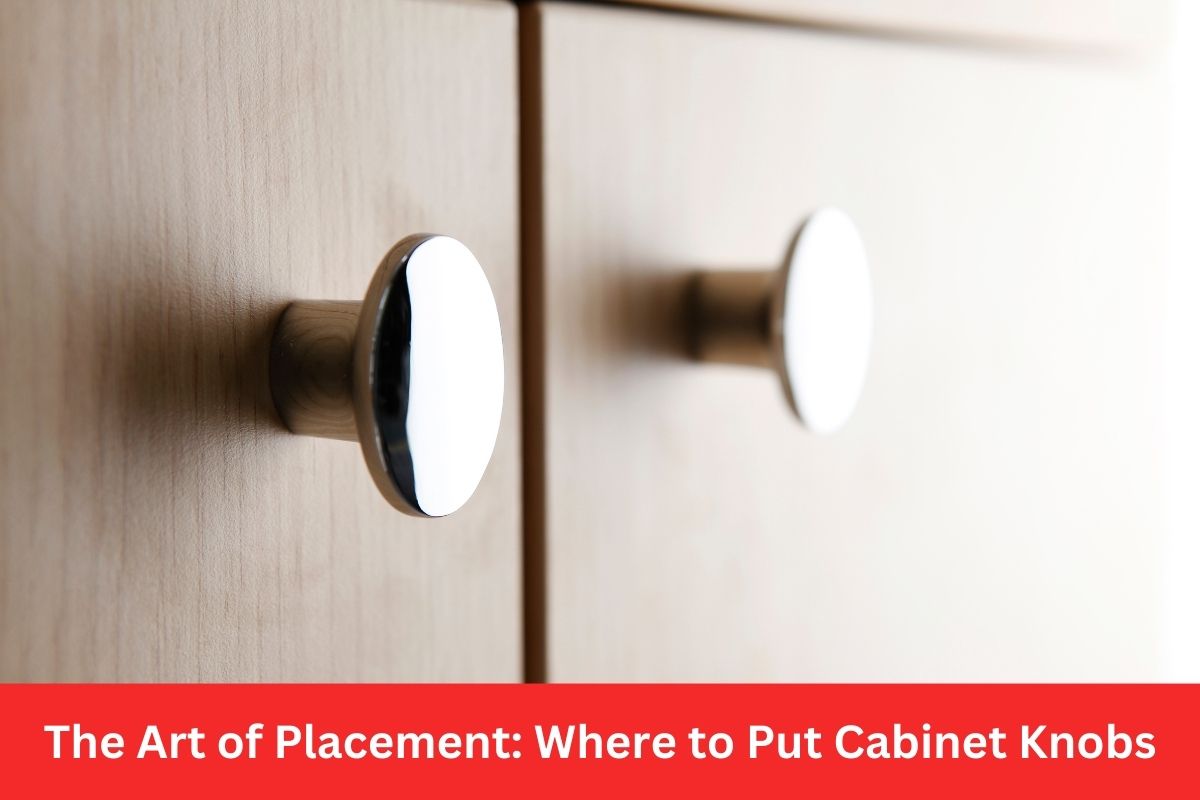Placement is a skill that is crucial for both utility and beauty, especially when it comes to cabinet knobs. The placement of cabinet knobs directly affects how usable and accessible cabinets are, resulting in a simple and straightforward experience. The appropriate placement of knobs promotes usefulness and ergonomics by allowing for easy grasp and pleasant operation. Additionally, the positioning of cabinet knobs improves the space’s overall design by adding to the aesthetic appeal of the cabinets.
Homeowners may maximize the functionality and beauty of their cabinets by paying attention to the art of placement. As a consequence, this will pay out with a well-thought-out and user-friendly atmosphere.
Functionality and ergonomics: Considering accessibility and ease of use aesthetic
Functionality and ergonomics should be your top priorities when choosing the location of cabinet knobs. Under the same, the cabinet knobs should be positioned to make accessing the cabinets simple and convenient. The knobs on lower cabinets should be positioned to be easy to operate and not put too much strain on the back.
When opening or shutting higher cabinets, putting the knobs at their bottom corners enables a natural hand movement. It’s also crucial to consider the knobs’ size and form to provide a secure grip and easy operation. You may design a user-friendly and effective kitchen or storage area by prioritizing ergonomics and utility when placing cabinet knobs.
Considerations: Enhancing the visual appeal of cabinets
While utility is essential, cabinet knob placement also greatly impacts how attractive your cabinets seem. The knobs may serve as ornamental decorations, giving your cabinets more character and charm. When considering the aesthetic component, it’s crucial to match the knob location with the room’s general design concept and style. As an illustration, arranging the knobs in a symmetrical arrangement or in a linear alignment might produce a modern and minimalist style.
On the other hand, asymmetrical or mixed placement might provide a little individuality and character for a more eclectic or antique aesthetic. By properly positioning the knobs, you may increase the visual appeal of your cabinets.
Practical considerations: Understanding cabinet types and materials
Cabinet type and material practical concerns should also be considered while placing cabinet knobs. Placement criteria for knobs may vary depending on the kind of cabinet. For instance, knobs may need to be positioned closer to the top edge of inset doors on in-frame cabinets to prevent obstructing the frame. Similarly, when installing knobs on cabinets with glass doors, care must be taken to ensure they do not obscure the view or remove the glass’s visual appeal.
The cabinets’ material might also influence the positioning of the knobs. For raised panel cabinets, for instance, centering the knobs on the panel may give a balanced and aesthetically pleasant appearance. You can make sure that the positioning of the knobs is useful and improves the overall functionality and attractiveness of your cabinets by studying the particular needs of the types and materials of your cabinets.
Personal preferences: Reflecting your style and design taste
Finally, consider your own tastes and design preferences when deciding where to put cabinet knobs. The location of the knobs may provide a special touch to your cabinets, which should reflect your own taste and personality. Try out several positioning possibilities to find the set-up that best suits your aesthetic tastes. You may choose an asymmetrical or random arrangement for a more eclectic and artistic appearance or a symmetrical pattern for a feeling of balance and order.
Also, take into account the knobs’ size, shape, and finish to ensure that they go well with the overall design concept. By considering your particular tastes, you may design a cabinet knob location that works well and provides a unique touch.
